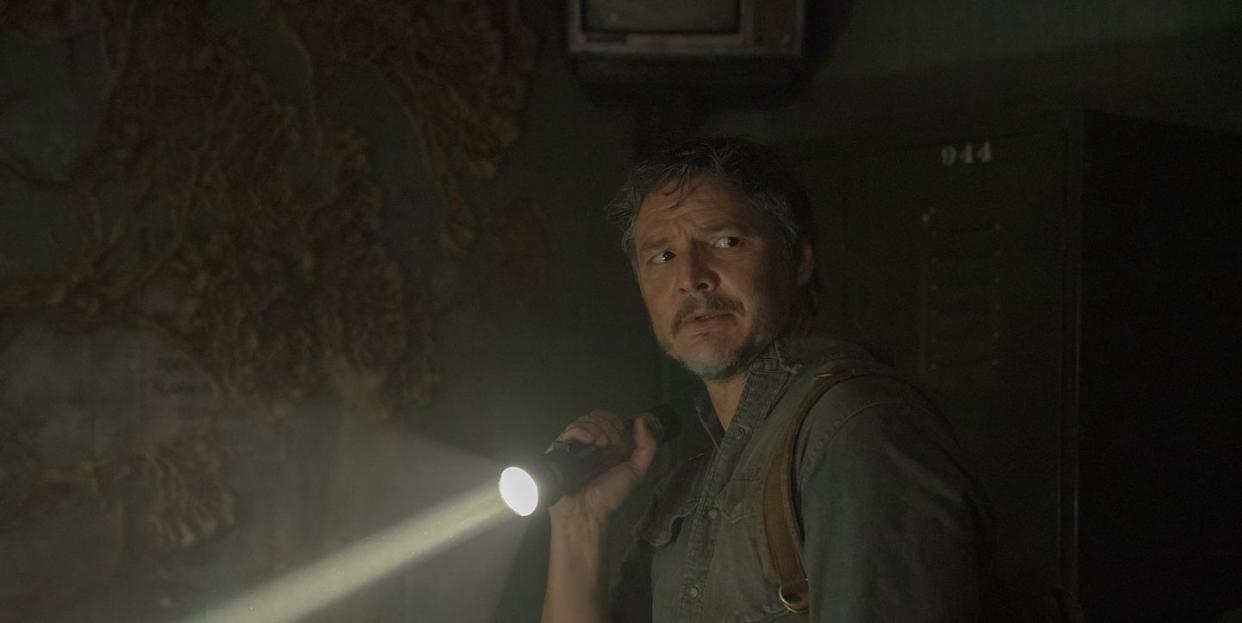What Is the Fungus in The Last of Us?

- Oops!Something went wrong.Please try again later.
"Hearst Magazines and Yahoo may earn commission or revenue on some items through the links below."
*Spoilers for HBO’s The Last of Us ahead!*
Based on the popular video game of the same name, HBO’s The Last of Us transports viewers to a post-apocalyptic society, 20 years after civilization is devastated by a viral fungal infection called Cordyceps. Survivor Joel (Pedro Pascal) is tasked to help Ellie (Bella Ramsey), a 14-year-old girl immune to the infection, escape a strict quarantine zone. Although the series has aired just two episodes so far, we’ve seen four out of six chilling stages of the infection, each one more horrifying than the last.
Like any movie or television series that’s rooted in a post-apocalyptic world, especially those dismantled by a virus or infection of some sort, we can’t help but question… is this threat real? Is Cordyceps, the fungal infection behind the devastation in The Last of Us, real?
Episode one of the series begins in 1968, as two doctors discuss global pandemics. One epidemiologist, Dr. Neuman, explains that it’s not viruses or bacteria that pose a dire threat — it’s fungus. “Fungi seem harmless enough,” he begins. “Many species know otherwise. Because there are some fungi who seek not to kill, but to control.”
“Viruses can make us ill, but fungi can alter our very minds,” Dr. Neuman continues. He then explains a fungus that infects insect species — for example, ants. It infiltrates its circulatory system, spreading hallucinogens that will bend the ant’s brain “to its will” and control its every movement. “The fungus needs food to live, so it begins to devour its host from within, replacing the ant’s flesh with its own,” Dr. Neuman says. “But it doesn’t let its victims die.”
The other doctor argues that this kind of fungal infection is real, but not in humans. However, Dr. Neuman suggests that if the world became slightly warmer, the fungi might evolve to withstand higher temperatures. He lists a number of fungi — including Cordyceps — that could build the ability of “burrowing into our brains and taking control not of millions of us, but billions of us.” OK, chills.
So, Cordyceps is real. In fact, according to NPR, The Last of Us video game creator Neil Druckmann was reportedly inspired by a 2008 Planet Earth documentary that filmed the debilitating effects of the Cordyceps fungus in bullet ants (aka the example given in the premiere episode). “It’s this fungus that burrows its way into insects’ minds and completely alters their behavior,” he said, per the outlet. “And you know, right away the idea popped in our head of like, ‘What if it jumped to humans?’ Cause you could imagine this fate worse than death, that your mind is still there but something else is controlling your body.”
But according to National Geographic, it’s pretty unlikely that a killer fungus like Cordyceps could infect humans. “If the fungus really wanted to infect mammals it would require millions of years of genetic changes,” João Araújo, a parasitic fungi expert at the New York Botanical Garden, told the outlet. Plus, the parasitic fungi evolves to develop an infectious strain for a specific type of insect, National Geographic explains. So the fungi leaping from an insect species to humans is very improbable.
Still, as we tune into more episodes of The Last of Us, we will be (mostly) covering our eyes when those spindly mushroom-like tendrils explode out of the infected’s heads.
You Might Also Like

